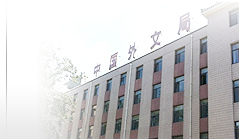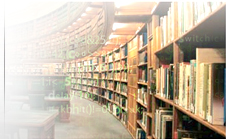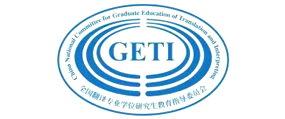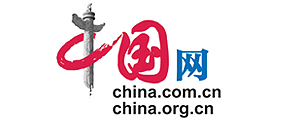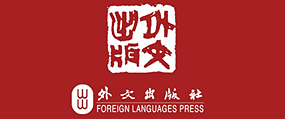目录
翻译博士专业学位建设专题论坛 /05 加快培育高层次翻译专业人才 推进国家翻译能力高质量发展 于涛
10 聚焦服务国家重大发展战略需求 培养高层次应用型翻译领军人才 姜锋
14 开设专博教育:翻译人才培养迎来崭新时代 黄友义
18 翻译专业学位教育的体系建设与人才培养 许钧
21 开设翻译博士专业学位的思考 穆雷
理论研究 /
25 翻译诗学 孙艺风
36 论翻译的双重中介性 王克非
45 文学翻译中的“形似”与“神似”新论 宋学智 赵斌斌
译史纵横 /
53 重译与价值构建——以伯伦知理《国家论》在晚清的汉译为例 李可
译介研究 /
61 汉诗绝句在美国的另类翻译与传播——以纽曼英语绝句大赛为例 许诗焱 Jonathan Stalling
70 重读经典 学以致用——《孙子兵法》在俄百年译介及传播 祝晶
翻译教学 /
79 本科翻译概论课程设计及其内在矛盾 陈顺意
译家研究 /
84 思想之窗:从翻译隐喻透视飞白的翻译思想 郭国良 高淑贤
翻译评论 /
92 辜鸿铭《论语》英译主体“同质语境”中的对话 张小曼 孙晓璐
书刊评介 /
100 书写他者,认识自我——《国外翻译理论发展研究》述评 宋凯彤 蓝红军
学术视点 /
106 多模态翻译研究的学术史考察 王洪林
会议综述 /
114 翻译世界中的合作——第十届亚太翻译论坛综述 徐秀玲 邢玉堂
实践探索 /
121 中国诉讼类法律术语的英译问题与对策 刘法公 王琳
127 中国植物名称英译之“创仿”方法与原则 任开兴 陈丽红
135 语境关联视阈下物流文本专业词汇汉译研究 鲍文 骆吉勤
自学之友 /
144 Stalking Made Easy: How Information and Communication Technologies
Are Influencing the Way People Monitor and Harass One Another (Excerpt)(Penny
A. Leisring) 周领顺 陆梦佳 译
149 译者译内改写行为过程分析 周领顺
153 推动职业教育高质量发展(雅言) 蔡力坚 译
155 翻译陷阱 蔡力坚
第三十四届韩素音国际翻译大赛揭晓 /
160 第三十四届韩素音国际翻译大赛命题及评审工作报告
162 第三十四届韩素音国际翻译大赛评审委员会名单
163 第三十四届韩素音国际翻译大赛获奖名单
176 英译汉参考译文:疫情中的转山之旅
179 英译汉译文评析:心参禅意 情润译文 陈法春
184 汉译英参考译文:Intangible Cultural Heritage with an Unceasing Charm
186 汉译英译文评析:“翻译中国”背景下的译者能力思考 李晶
英文摘要 /
词语选译 /
夹页 中国共产党第二十次全国代表大会报告重点语汇汉英对照摘编
本期论文摘要
理论研究
翻译诗学
孙艺风 澳门大学
孙艺风 澳门大学
摘要:翻译与跨文化改写密切相关,无论是意识形态、文体还是其他方面的操纵,皆可在文学翻译中展现。有鉴于翻译诗学在文学翻译中体现最为突出和集中,本文的讨论主要围绕文学翻译与诗学的几个主要方面。在文学翻译的语境模式下,无论何种改写,究其本质仍是跨文化行为。故此,有效克服跨国别、跨种族及跨文化带来的交际障碍是文学翻译成功的关键。翻译诗学所面临的理论问题和应对策略,为文学翻译所处的困境持续不断地提出严峻的挑战。其中涉及跨文化语境下译者的身份问题、译文的接受和阅读的体验,以及改写和操纵的形式和性质。本文着重强调,因文学翻译尤其缺乏可迁性,由此形成了改写和操纵的空间。改写和操纵的动机和环境各异,具有不同的诗学功能和调节作用。此外,文学翻译不可回避的是文学性的辨识、捕捉以及在译文里的再现。成功的文学翻译需要译者创造力的发挥、跨文化语境下的文学语言的建构与美学表达,以实现与目标读者建立对话共鸣和视界融合。
论翻译的双重中介性
王克非 北京外国语大学
摘要:本文从翻译的认识和定义入手,论述翻译的双重中介性。作者指出,翻译的使命是移花接木,翻译的意义是催生异彩。移花接木是翻译的第一重中介,即通过语言文字的转换,使我们得以了解域外文化,并取其精华,移植本土;催生异彩是翻译的第二重中介,在语言沟通后,目标语一方激发活力,蓬勃生机,灿烂文化,是更深层次的中介。双重中介作用揭示了翻译文化活动的完整过程。
文学翻译中的“形似”与“神似”新论
宋学智 吉林外国语大学 | 赵斌斌 吉林外国语大学/南京师范大学
摘要:形似与神似在文学翻译活动中形成的对立关系,不像直译与意译那样主要属于技术问题,也不像归化与异化那样偏于策略问题,它是关于诗学的问题、美学的问题,是文学作品之所以为文学作品的根本性问题。在对形似与神似的概念及二者关系的演变脉络做了梳理后,本文对二者在我们思维中形成的一些固化观点进行了商榷。最后,就如何化解翻译活动中二者之间的矛盾,在思路上和方法上提出前人探讨之外的补充性思考。
译史纵横
重译与价值构建
——以伯伦知理《国家论》在晚清的汉译为例
李可 南京大学
——以伯伦知理《国家论》在晚清的汉译为例
李可 南京大学
摘要:重译不仅是文本再生产活动,也是围绕原作与译作、前译与后译形成的价值构建过程,并在此过程中造就彰显差异性的译本。本文从重译的历史研究视角出发,聚焦梁启超在晚清对《国家论》的两次译介,从历史语境与价值定位、文本阐释与价值生成、读者接受与价值挑战三个层面探讨重译中价值构建的动机、策略和意义。
译介研究
汉诗绝句在美国的另类翻译与传播
——以纽曼英语绝句大赛为例
许诗焱 南京师范大学 | Jonathan Stalling 俄克拉荷马大学
——以纽曼英语绝句大赛为例
许诗焱 南京师范大学 | Jonathan Stalling 俄克拉荷马大学
摘要:中国古典诗词被视为中华文化的瑰宝,如何将中国古典诗词的魅力传递给不懂中文的外国人却一直是一个难题,而在美国举办的纽曼英语绝句大赛似乎为中国古典诗词的海外译介提供了有效的路径。本文基于与大赛创始人石江山教授的交流,结合历届大赛的获奖作品和参赛作品,分析汉诗绝句的另类翻译与另类传播,希望本文的研究能够为中国文化“走出去”提供另类的思路。
译介研究
重读经典 学以致用
——《孙子兵法》在俄百年译介及传播
祝晶 中南财经政法大学
——《孙子兵法》在俄百年译介及传播
祝晶 中南财经政法大学
摘要:《孙子兵法》以其屡创中国主题图书俄传纪录的传播效果,当之无愧成为中国文化“走进”俄罗斯的典范。历时梳理《孙子兵法》的汉学界和军界缩译本引介期、汉学界全译本和研究著作发展期、工商界应用著作高峰期三个俄传阶段后发现,其俄译动因和广受关注成因有三,分别是俄罗斯受西方强国影响开始关注《孙子兵法》、中国取得的成就引起俄对华的兴趣、《孙子兵法》的经典性和普遍适用性。要想通过译介助推更多中华文化“走进”俄民众心中,可以如《孙子兵法》俄传一般,以持续增强的自身实力及合作共赢吸引俄方主动引介,根据俄民众需求、兴趣有选择地推广标志性文化元素,以及在国际舆论宣传上加以引导。
翻译教学
本科翻译概论课程设计及其内在矛盾
陈顺意 广州大学
陈顺意 广州大学
摘要:国内本科翻译专业(方向)普遍开设翻译概论课程,但相关教材较少,相关研究缺乏。对于课程目标、课程定位、课程内容、考核方式、工作语言等方面业内尚未明确,亦未达成共识。本文拟在简要梳理现有相关研究的基础上,结合作者自身教学实践,就以上几个方面展开讨论,并对课程设计中存在的几对内在矛盾进行思考,以期对该课程的建设提供一点启示。
译家研究
思想之窗:从翻译隐喻透视飞白的翻译思想
郭国良 高淑贤 浙江大学
郭国良 高淑贤 浙江大学
摘要:诗歌翻译家飞白的翻译思想内涵丰赡,值得挖掘与整理。飞白对自身翻译思想的论述以大量隐喻贯穿其中,这些隐喻如同思想之窗,截显了其中的方方面面,为探究其翻译思想提供了一个特别的切入口。通过对飞白的主要隐喻进行归纳阐释,并结合具体译例分析,可以发现:色彩之喻体现了飞白对翻译标准多元化以及诗翻译本体价值的思考;言荃之喻表现了飞白形神兼顾、传递风格的译诗原则;军事之喻传达了他五事七计与一点两面并举的译诗辩证法;保姆之喻则凸显了其谨慎补偿、培育读者的态度。
翻译评论
辜鸿铭《论语》英译主体“同质语境”中的对话
张小曼 孙晓璐 合肥工业大学
张小曼 孙晓璐 合肥工业大学
摘要:翻译主体间性是跨越时空、语言、文化三个维度的不对称交流,是一种错位的非共时性沟通,能够创造同质语境,在作者、译者、读者之间构建隐性对话平台和沟通路径。辜鸿铭的《论语》英译,正是在“同质语境”的联通作用下,促成了作者、译者、读者三者之间的主体间循环式转化性对话关系,使翻译主体间性强化了文化间性,使《论语》的意义在译者的阐释中不断得到“延异”和“播撒”,使《论语》的思想在循环对话中催生了文化新质,从而驱动了文化的内向继承和外向传播。典籍外译需要调动译者的主体间性作用,激发译后读者的对话意识,推动译作在异域文化的接受与新生。
书刊评介
书写他者,认识自我
——《国外翻译理论发展研究》述评
宋凯彤 蓝红军 广东外语外贸大学
——《国外翻译理论发展研究》述评
宋凯彤 蓝红军 广东外语外贸大学
摘要:《国外翻译理论发展研究》以翻译研究的发展历程作为新线索,将理论的生成和发展置于特定语境中进行阐释,获得了对理论的新认识。其对翻译理论的述评,揭示了国外理论体系的建构方式,为建构中国翻译理论体系提供了一定的参考;其对国外翻译理论的书写,则为中国翻译理论史研究范围的拓展和梳理线索选用提供一定启发。
学术视点
多模态翻译研究的学术史考察
王洪林 浙江万里学院
王洪林 浙江万里学院
摘要:技术的发展带来信息传播方式的改变,翻译对象也随之由语际翻译转向多模态翻译。本文对多模态翻译研究进行学术史梳理,探究多模态翻译研究缘起、研究焦点与不足之处,并据此对多模态研究动态进行前瞻,以期对多模态翻译研究有一个更为系统、全面的认识,进而为中国多模态翻译研究提供一定借鉴。
会议综述
翻译世界中的合作
——第十届亚太翻译论坛综述
徐秀玲 北京外国语大学 │ 邢玉堂 中国外文局翻译院
——第十届亚太翻译论坛综述
徐秀玲 北京外国语大学 │ 邢玉堂 中国外文局翻译院
摘要:在世界格局风云变幻、新冠疫情持续蔓延、新技术迅猛发展的时代背景下,第十届亚太翻译论坛以“翻译世界中的合作:新时代、新变化、新模式”为主题成功举办,旨在探索新时代亚太翻译合作发展之道。本文从产、用、学、研等四个层面概述和评析论坛主要内容,并在此基础上探讨本届论坛给未来亚太乃至全球翻译界合作发展带来的启示。
实践探索
中国诉讼类法律术语的英译问题与对策
刘法公 浙江海洋大学 │ 王琳 浙江工商大学
刘法公 浙江海洋大学 │ 王琳 浙江工商大学
摘要:本文基于《中华人民共和国刑事诉讼法》、《中华人民共和国行政诉讼法》、《中华人民共和国民事诉讼法》、《中华人民共和国海事诉讼特别程序法》四部诉讼类法律权威英译本中存在的大量法律专业术语“一名多译”问题,用实例分析“诉讼法”、“诉讼费用”、“⋯⋯状/书”三条诉讼类法律术语译名不一致问题的严重性以及法律概念传递的阻碍性,阐明法律专业术语英译名应当保持一致的原因。本文提出规范一致法律术语英语译文,可按以下两条翻译原则:(1)遵循英语国家对应法律使用的专业术语;(2)以概念内涵选用法律英语专业术语,以期提高中国诉讼类法律对外传播的英语译文质量。
中国植物名称英译之“创仿”方法与原则
任开兴 陈丽红 台州学院
任开兴 陈丽红 台州学院
摘要:截至2022年5月,中国已发现的植物有38,287种,一部分植物名称在英语中已有对应词,但大部分存在空白。对于前一类植物,英译时可以沿着其拉丁语学名之“藤”摸到英语之“瓜”,但对于后一类植物,“顺藤摸瓜”法已经力所不及,需要借鉴“创造性模仿法”,通过仿学取名、仿英取名、仿汉取名、零仿创名等方式创立新名。在“创仿”过程中,应恪守不创定名、瞄准属名、规避同名、力求简明、讲求语法、谨防误拼、谋求连贯、权衡话语、厘清本末等原则。
语境关联视阈下物流文本专业词汇汉译研究
鲍文 骆吉勤 浙江工商大学
鲍文 骆吉勤 浙江工商大学
摘要:物流作为供应链活动的一部分,是为了满足客户的需要,以最低的成本,通过运输、保管、配送等方式,实现原材料、半成品、成品及相关信息由商品的产地到商品的消费地所进行的计划、实施和管理的全过程。用以表达和陈述这一过程中主要活动与各个环节的物流文本具有叙述客观、概念准确、动态多样的语言特点,其中包含有大量灵活多态的专业词汇。这些专业词汇的意义与其所在语境密切关联,对其所在语境的依赖性较大。本文根据语境及最佳关联原则在翻译物流文本专业词汇时起到的作用,对物流文本专业词汇汉译问题进行分析探讨,并据此提出专业术语的规范统一、特定语境中的变通、形象与情景思维的调动等翻译对策,以丰富物流文本词汇的翻译研究,提升物流文本翻译质量,保障物流相关国际化业务顺利
开展。
开展。
本期主要论文英文摘要
(英文摘要修订:刘亚猛)
From Cross-cultural Rewriting to the Translator’s Creativity: The Poetics of Translation
By SUN Yifeng (University of Macau, Macao, China) p.25
By SUN Yifeng (University of Macau, Macao, China) p.25
Abstract: Cross-cultural rewriting, whether through ideological, stylistic, or other mode of manipulation, is intimately intertwined with translation especially literary translation, whose lack of transferability creates the space for rewriting and manipulation. When differently motivated and contextualized, rewriting tends to perform different poetic functions and produce different regulative effects. Since literary translation remains essentially a cross-cultural act even with whatever rewriting it involves, its success depends on effectively overcoming the communicative barriers generated by transnational, interracial, and intercultural contexts. At stake in efforts to surmount these barriers are the translator’s identity in a cross-cultural context, the readers’ experience of receiving and reading the translated text, and the form and manner of rewriting and manipulation. Moreover, literary translation cannot avoid identifying, capturing, and rendering literary qualities in the translated text. Successful literary translation requires therefore the translator’s creativity in constructing expressive and aesthetically satisfying literary language in a cross-cultural context, so that the translation can initiate a dialogue, produce a resonance, and bring about a fusion of vision with the target reader.
Keywords: translational poetics; transcultural poetics; rewriting and manipulation; translator’s identity; transcultural reading
Translation’s Double Mediation Effect
By WANG Kefei (Beijing Foreign Studies University, Beijing, China) p.36
By WANG Kefei (Beijing Foreign Studies University, Beijing, China) p.36
Abstract: Since translation takes on the mission of simultaneously transplanting the source culture and enriching the target culture with foreign elements, it produces a double mediation effect. In the first phase of the mediation, i.e. language transference, translation helps to deepen target language users’ understanding of another culture by making the best it has to offer accessible to them. In the second phase, the target language becomes more energetic and expressive as a result of the effect of mediation at a higher level. This two-phased mediation constitutes the whole process of translation as a culture communication.
Keywords: translation; interlanguage; double mediation effect
A New Perspective of “Similarity in Form” and “Similarity in Spirit” in Literary Translation
By SONG Xuezhi (Jilin International Studies University, Changchun, China) & ZHAO Binbin (Jilin International Studies University, Changchun, China / Nanjing Normal University, Nanjing, China) p.45
By SONG Xuezhi (Jilin International Studies University, Changchun, China) & ZHAO Binbin (Jilin International Studies University, Changchun, China / Nanjing Normal University, Nanjing, China) p.45
Abstract: The dichotomy between “Similarity in Form” and “Similarity in Spirit” in literary translation is not primarily a technical issue like literal v. free translation, nor is it a strategic one like domestication v. foreignization. It concerns both poetics and aesthetics, dealing with the fundamental question of what makes a literary work. Following a close look into both concepts in question and the evolution of their relationship, this paper proposes a new perspective on some popularly held assumptions about the two kinds of “similarity,” and offers additional thoughts on how this pair of binary concepts could be reconciled in the actual practice of translation.
Keywords: similarity in form; similarity in spirit; contradictions; resolution
Retranslation as a Means for Reconstructing Values:
A Case Study of the Late Qing Translation of Western Theories of State
By LI Ke (Nanjing University, Nanjing, China) p.53
A Case Study of the Late Qing Translation of Western Theories of State
By LI Ke (Nanjing University, Nanjing, China) p.53
Abstract: Retranslation is not only the reproduction of texts, but also a value-constructing and difference-making process that involves both the original works, their translations, and the new versions. This article focuses on the two retranslations of J. K. Bluntschli’s theory of state by Liang Qichao in the late Qing Dynasty, discussing his motivations and strategies for undertaking the projects as well as the influences of his retranslations. Taking this as a representative case, the article looks further into how values are determined by historical contexts, created in the process of interpretation, and challenged in readers’ reception of retranslations.
Keywords: retranslation; value; Liang Qichao; theory of state; Bluntschschli
The Newman Prize and the Translation of Chinese Jueju Poetry in the U.S.A
By XU Shiyan (Nanjing Normal University, Nanjing, China) & Jonathan Stalling (The University of Oklahoma, Norman, U.S.A) p.61
By XU Shiyan (Nanjing Normal University, Nanjing, China) & Jonathan Stalling (The University of Oklahoma, Norman, U.S.A) p.61
Abstract: Classical Chinese poetry is a treasure of Chinese culture, but conveying its charm to readers who do not understand Chinese has always been a problem. The Newman Prize for English Jueju Contest, held in the U.S., offers a promising way of solving this problem. Based on talks with Jonathan Stalling, founder of the Contest, this paper analyzes the diverse approaches the contestants for - and especially the winners of - the Prize have adopted to translating Chinese jueju poems and introducing them to English readers, in an attempt to offer some helpful pointers to those engaged in efforts to introduce Chinese literature to other parts of the world.
Keywords: classical Chinese poetry; English translation; literary translation; cultural communication; the Newman Prize for English Jueju Contest
Conflicting Considerations Underlying the Course Design of Undergraduate Level “Intro to Translation”
By CHEN Shunyi (Guangzhou University, Guangzhou, China) p.79
By CHEN Shunyi (Guangzhou University, Guangzhou, China) p.79
Abstract: Even though Introduction to Translation has been offered as a compulsory course by all B. A. level translation programs in Chinese colleges, suitable textbooks for the course remain scanty, academic studies on its teaching are lacking, and no consensus has been reached so far about the course’s objective, content, evaluation method, and even teaching language. This paper makes a tentative attempt at addressing these issues by drawing upon previous researches on related subjects and the author’s own teaching experiences as well. It argues, among other conclusions, that identifying and resolving the conflicting considerations that go into and underlie the course’s design holds the key to dealing with the problems it is now facing.
Keywords: Introduction to Translation; undergraduate; course design; course construction; contradictions
Translation in Metaphorical Terms: A Poetry Translator’s Reflections on His Own Profession
By GUO Guoliang & GAO Shuxian (Zhejiang University, Hangzhou, China) p.84
By GUO Guoliang & GAO Shuxian (Zhejiang University, Hangzhou, China) p.84
Abstract: Celebrated poetry translator Fei Bai has offered his reflections on translation in vividly metaphorical terms. This paper identifies and analyzes those of his metaphors which provide an especially valuable insight into his thoughts on translation, and finds that Fei Bai tends to use color metaphors to express his belief in the intrinsic value of poetry translation and in the diversification of criteria for its evaluation; that he employs lexical metaphors for stressing the importance of form and style in poetry translation; that his dialectical thinking about poetry translation is manifested in the military metaphors he deploys; and that he also uses care-giver metaphors to highlight the need for fostering translated poetry readers and to urge for caution in using compensation as a strategy of poetry translation.
Keywords: Fei Bai; metaphor; translation thoughts

